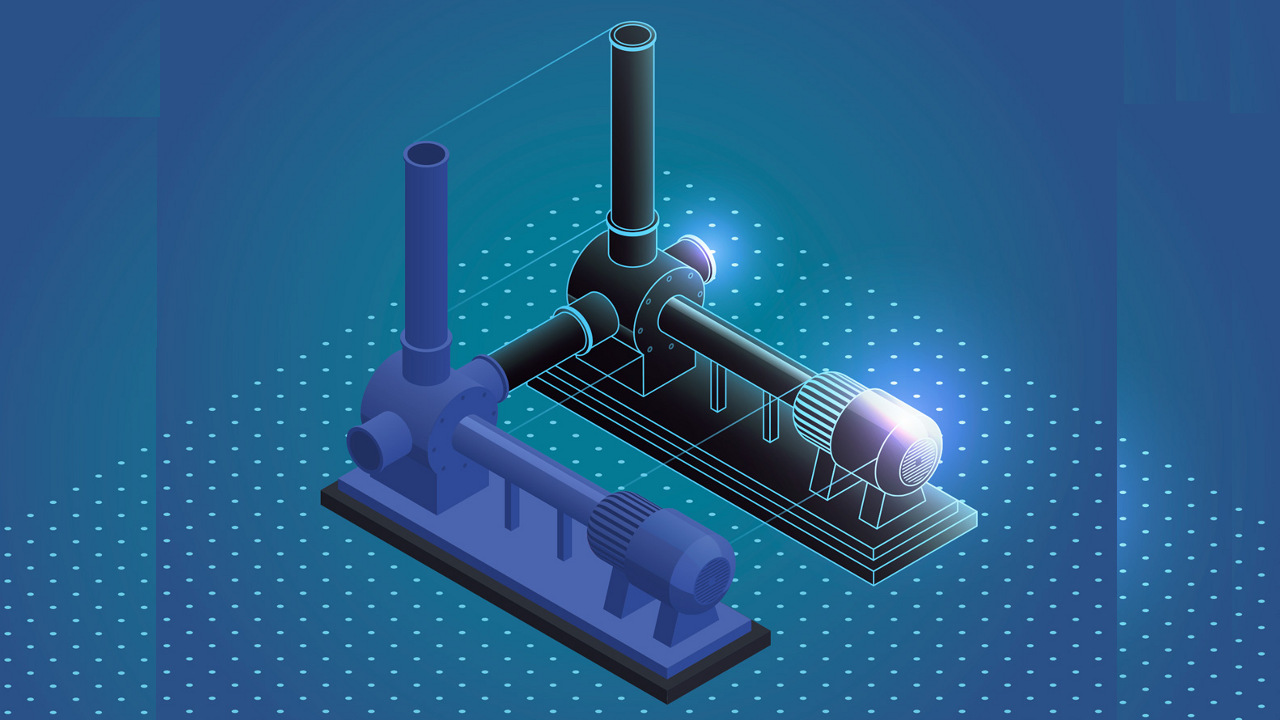Increasing productivity in manufacturing has been an elusive goal despite significant advances in factory automation technology and robotics. There are four main challenges currently facing manufacturers: low production efficiency; product defects and inconsistent quality; unforeseen machine maintenance; and high energy use and waste costs. The fourth industrial revolution—also referred to as Industry 4.0—sets out critical technological directions for addressing these grand challenges via data-driven digital manufacturing (DM) solutions incorporating novel computing technology that combines AI/machine learning (ML) and digital twins (DTs)4 for digitally representing complex physical industrial machine, products, and people in production.
While digital manufacturing powered by digital twins and dependency/constraint-aware ML is still in early stages, it has shown its potential in improving manufacturing productivity by 20%-30%.
Although the Industry 4.0 vision and directions are supported by major manufacturing companies and technology providers (for example, Siemens, Bosch, and IBM), its technology baseline is not mature enough to address related computing needs. DTs are still in the early stages of development supporting only limited cases of machine monitoring/visualization and process design/testing. Similarly, existing ML-based solutions for predicting and fixing production problems typically suffer from high inaccuracy, which is due to the complex data dependencies and constraints imposed by the process and the machines, products, and people involved, and also insufficient training data bound by achievable production runs.
We have been developing, testing, and deploying DM solutions in food, steel, and composite manufacturing plants that incorporate the following novel research outcome in computing technologies for DM:
- Novel DTs for DM that digitally represent the main physical entities in manufacturing. Each DT includes a physical twin, which a complex industrial machine, a product, or a person in production; a virtual twin involves knowledge graph-based representation of the physical entity including its parts, input/output and other variables, as well as related relationships, dependencies, and constraints between them; and digital threads, which are communication channels between the two. DTs provide cyber-physical representation of the physical entities in manufacturing, support their integration in DM solutions, and enable interactions with the physical entities involved. Novel research outcomes include the knowledge graph-based models of the manufacturing entities, model-based creation of DTs, and the management of the DT life cycle.1,2
- Novel dependency/constraint-aware ML (dcML) models for DM that predict production outcomes (for example, the end-to-end production efficiency, the quality/consistency of the product(s), maintenance issues, and the energy consumed). dcML-based predictions are used to make improvements/corrections to the production processes and related manufacturing entities (for example, by changing machine settings or reducing the speed of production) to prevent related issues before they occur. For example, an automation dependency exists between an industrial oven’s temperature settings variable and the temperature variables of its temperature sensors (which are referred to as machine parameters in DM). Increasing the oven’s temperature will cause the values of its temperature parameters to increase accordingly. A sample physical constraint of the oven’s parameters involves the time it takes from setting the temperature to reach it. Novel dcML models are designed to automatically learn production-line knowledge from knowledge graphs of the relevant DTs, consolidate variables and interdependencies to improve accuracy, and deal with process (sequence) dependencies that existing ML models cannot handle.2 Unlike most existing predictive ML models that achieve a low accuracy (that is, 45%-55%) analyzing manufacturing data, dcML achieves much higher predictive accuracy (that is, 80%–95%) in DM, which allow DM solutions to correct issues before they arise.

Figure. Digital Twins and dependency/constraint-aware machine learning supporting production improvements in food, steel, and composite manufacturing.
We are evaluating DM solutions powered by this novel research in food, steel, and composite manufacturing lines across Australia. For example, such a DT and dcML-based DM solution is currently improving the consistency of food products manufactured in Bega’s Port Melbourne plant in Australia. This DM solution3 includes DTs for evaporators, separators, and pumps in Bega’s plant, and a dcML model that predicts the consistency of food products (for example, vegemite and peanut butter) before they are manufactured. This dcML model has been trained with one year of production data collected from machine, products, materials, and plant operators to “understand” the dependencies and physical constraints between variables, such as machine settings and parameters. Such predictions allow timely automatic adjustments improving the consistency of the product by 17% in the first pass, and 100% in the second pass.
We are evaluating DM solutions powered by this novel research in food, steel, and composite manufacturing lines across Australia.
We are currently developing similar DM solutions for reducing machine breakdowns in steel manufacturing at Infrabuild’s Laverton plant, and for improving the production efficiency of composite airframe parts via reducing their cure cycle in Boeing Australia. These DM solutions are achieving greater than 80% accuracy. We envision that future DM solution powered by DTs and dcML will improve production efficiency, enhance product quality, and reduce breakdowns by 20%-30% across the entire manufacturing industry.




Join the Discussion (0)
Become a Member or Sign In to Post a Comment